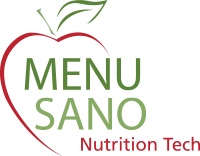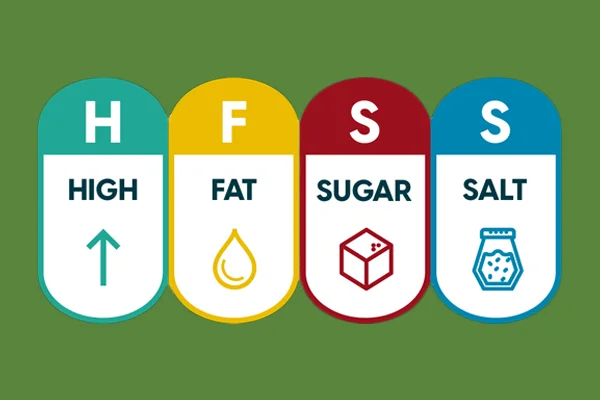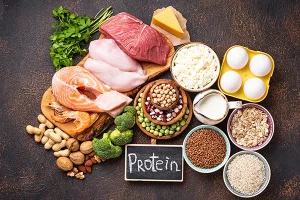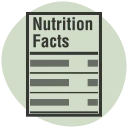The High Fat, Salt and Sugar (HFSS) nutrient profiling model is central to UK regulations governing the promotion and placement of less healthy food and drink products. Brands, retailers, and food manufacturers must understand and accurately calculate HFSS scores to comply with restrictions on advertising and promotions.
In this detailed guide, we’ll break down the whole process of HFSS calculation, what it means, how it’s done, and which products are affected. By the end, you’ll have a precise understanding of how to use an HFSS calculator, interpret results, and optimize recipes accordingly.
Key Takeaways
- The HFSS score determines if a product is classified as “less healthy” under UK regulations.
- It’s calculated by subtracting positive nutrient points (fruit/veg/nuts, fibre, protein) from negative points (energy, saturated fat, sugar, sodium).
- A score of 4+ for foods or 1+ for drinks means the product is HFSS.
- Applies to categories like soft drinks, snacks, ready meals, and desserts.
- Use an HFSS calculator for accuracy and easier reformulation.
What is the HFSS Nutrient Profiling Model?
The HFSS nutrient profiling model, developed by the UK’s Department of Health, assigns a score to food and drink products based on their nutritional composition per 100g. This score determines whether a product is classified as “less healthy” and therefore subject to marketing restrictions.
The model works by awarding points for both negative nutrients (energy, saturated fat, total sugar, and sodium) and positive nutrients (fruit, vegetables and nuts, fibre, and protein). The final HFSS score is the balance of these, indicating the overall healthfulness of the product.
How to Calculate HFSS Score
To calculate your HFSS score, you’ll need a thorough nutritional breakdown of your product. The HFSS model assigns A points for less healthy nutrients and C points for beneficial nutrients. The overall score is calculated by subtracting C points from A points.
Step 1: Calculate A Points (Negative Nutrients)
“A” Points are awarded for the following per 100g of the product:
- Energy (kJ)
- 0–3 points depending on energy content
- 0–3 points depending on energy content
- Saturated Fat (g)
- 0–10 points based on saturated fat levels
- 0–10 points based on saturated fat levels
- Total Sugars (g)
- 0–10 points according to total sugar content
- 0–10 points according to total sugar content
- Sodium (mg)
- 0–10 points based on sodium levels
| Nutrient | Points Range |
| Energy | 0 to 10 |
| Saturated Fat | 0 to 10 |
| Sugars | 0 to 10 |
| Sodium | 0 to 10 |
Total these to get your A score.
Step 2: Calculate C Points (Positive Nutrients)
“C” Points are calculated for:
- Fruit, Vegetables & Nuts (%)
- 0–5 points awarded based on % by weight
- 0–5 points awarded based on % by weight
- Fibre (g)
- 0–5 points depending on fibre content
- 0–5 points depending on fibre content
- Protein (g)
- 0–5 points based on protein levels
| Nutrient | Points Range |
| Fruit/Veg/Nuts (%) | 0 to 5 |
| Fibre (g) | 0 to 5 |
| Protein (g) | 0 to 5 |
Add these together to get your C score.
Step 3: Final HFSS Score Calculation
- If the A score is less than 11, the final HFSS score = A score − C score (all C points count)
- If the A score is 11 or more, then protein points are excluded from the C score
Step 4: Determine HFSS Classification
- For foods: If the final score is 4 or more, the product is classified as HFSS
- For drinks: If the final score is 1 or more, the product is classified as HFSS
Example HFSS Calculation
Let’s say a product has the following per 100g:
- Energy: 1500 kJ → 4 points
- Saturated Fat: 5g → 5 points
- Sugar: 18g → 6 points
- Sodium: 600mg → 6 points
A Points Total: 21
- Fruit/Vegetables/Nuts: 45% → 2 points
- Fibre: 3g → 2 points
- Protein: 6g → 3 points
C Points Total: 7 (only fruit/veg and fibre used since A ≥11)
Final HFSS Score = 21 – (2+2) = 17 → Product is classified as HFSS.
Businesses often use an HFSS calculator to simplify the process. This calculator automates these steps using the product’s nutritional data. However, manual knowledge of the score breakdown is vital for recipe reformulation and regulatory compliance.
What Foods Does HFSS Apply To?

Understanding which products fall under HFSS regulations is essential. The rules for promotions and advertising are particularly stringent in the UK.
Categories Covered Under HFSS Rules
The UK’s Food (Promotion and Placement) (England) Regulations 2021 apply HFSS restrictions to the following categories:
- Soft drinks
- Confectionery
- Cakes and biscuits
- Breakfast cereals
- Ice creams and desserts
- Pizza and ready meals
- Yogurts and dairy desserts
- Sauces and dressings
- Crisps and savoury snacks
- Breaded or battered foods
If your product falls into one of these categories, it must undergo an HFSS calculation to determine whether marketing restrictions apply.
Exemptions and Considerations
Certain products are exempt from HFSS restrictions:
- Foods not in the listed categories
- Small and medium-sized businesses (with fewer than 50 employees) may be exempt from some placement restrictions
- Specialty products such as meal replacements or medical nutrition may not require HFSS classification
However, exemptions can vary based on local implementation, and it is recommended to confirm with legal or regulatory advisors.
Why You Should Use an HFSS Calculator

Using an automated HFSS calculator can help you:
- Save time with fast nutrient profiling
- Identify reformulation opportunities
- Easily test new product variations
- Ensure accurate, regulation-compliant scoring
Reliable calculators such as those provided by NutriCalc or Sauce Shed offer simple tools where you enter your nutrition data, and the HFSS score is instantly generated. These tools often help identify which ingredients push the score over the threshold, enabling food developers to make targeted improvements.
Best Practices for HFSS Compliance
Here are several strategies to help your products avoid HFSS classification:
- Increase fibre: Use whole grains, legumes, or fibre-enriched ingredients
- Reduce added sugars: Replace with polyols or natural sweeteners
- Lower saturated fat: Switch to healthier fats or reduce fat content
- Enhance protein only if the A score is below 11
- Boost fruit/veg/nut content: Especially important in scoring
Regularly using an HFSS calculator during product development and reformulation allows you to maintain compliance without sacrificing flavour or consumer appeal.
How MenuSano Can Help
To successfully navigate the HFSS regulations, businesses must understand how to calculate HFSS scores, know which products are impacted, and adopt practical tools like an HFSS calculator. With this knowledge, food and beverage companies can make informed decisions that balance nutritional standards with commercial viability.
MenuSano is a user-friendly, cloud-based software designed to create nutrition and supplement labels that meet regulatory standards. It’s built to support food manufacturers, restaurants, healthcare institutions, and even businesses in the cannabis industry.
Schedule a free demo or start your free trial today to see how MenuSano can simplify your labelling process.




















